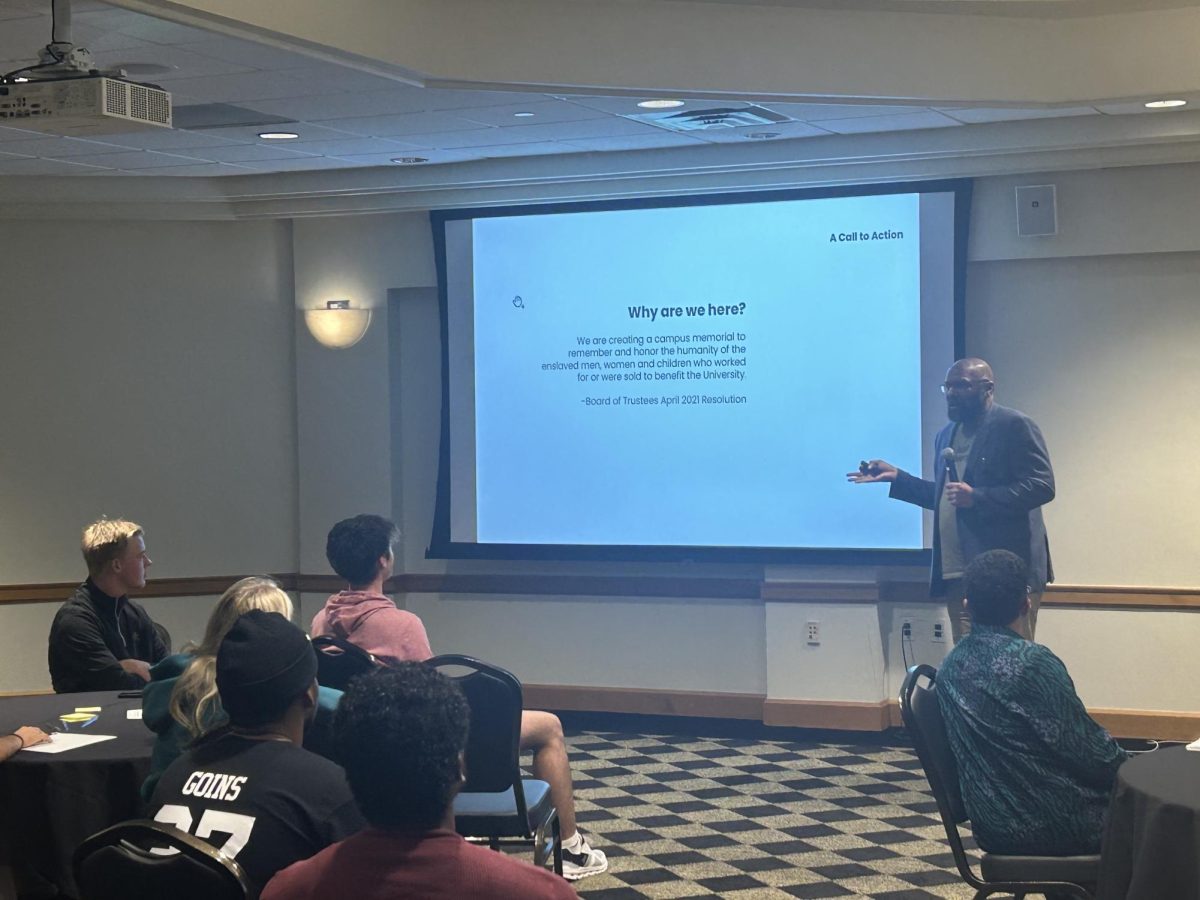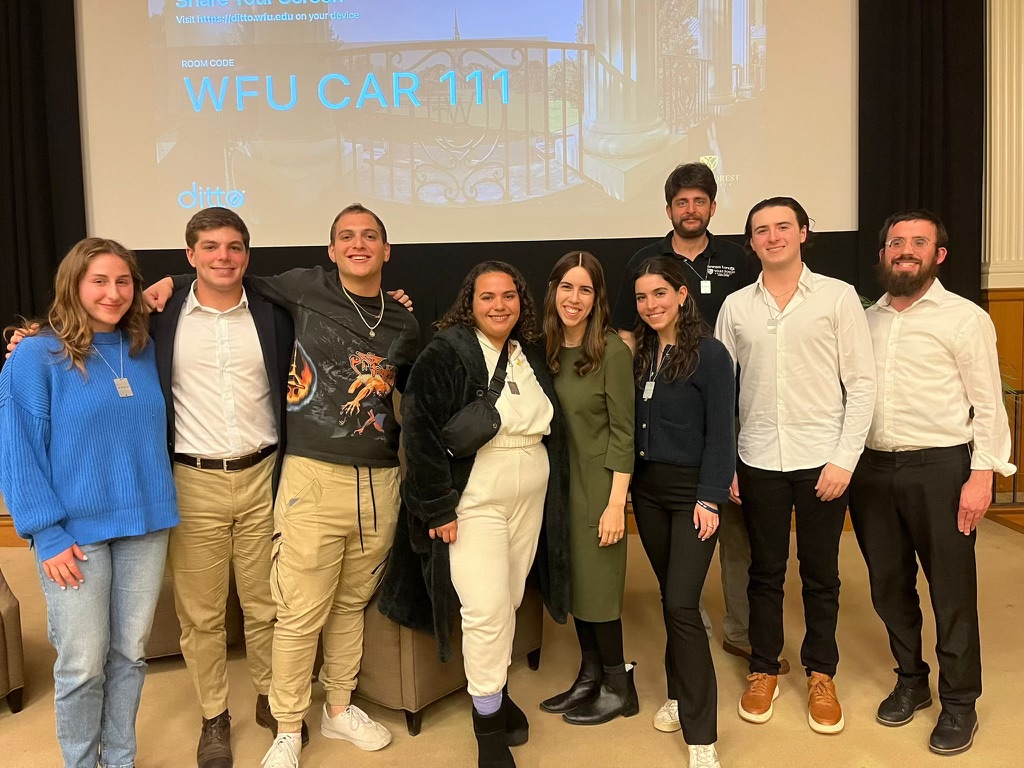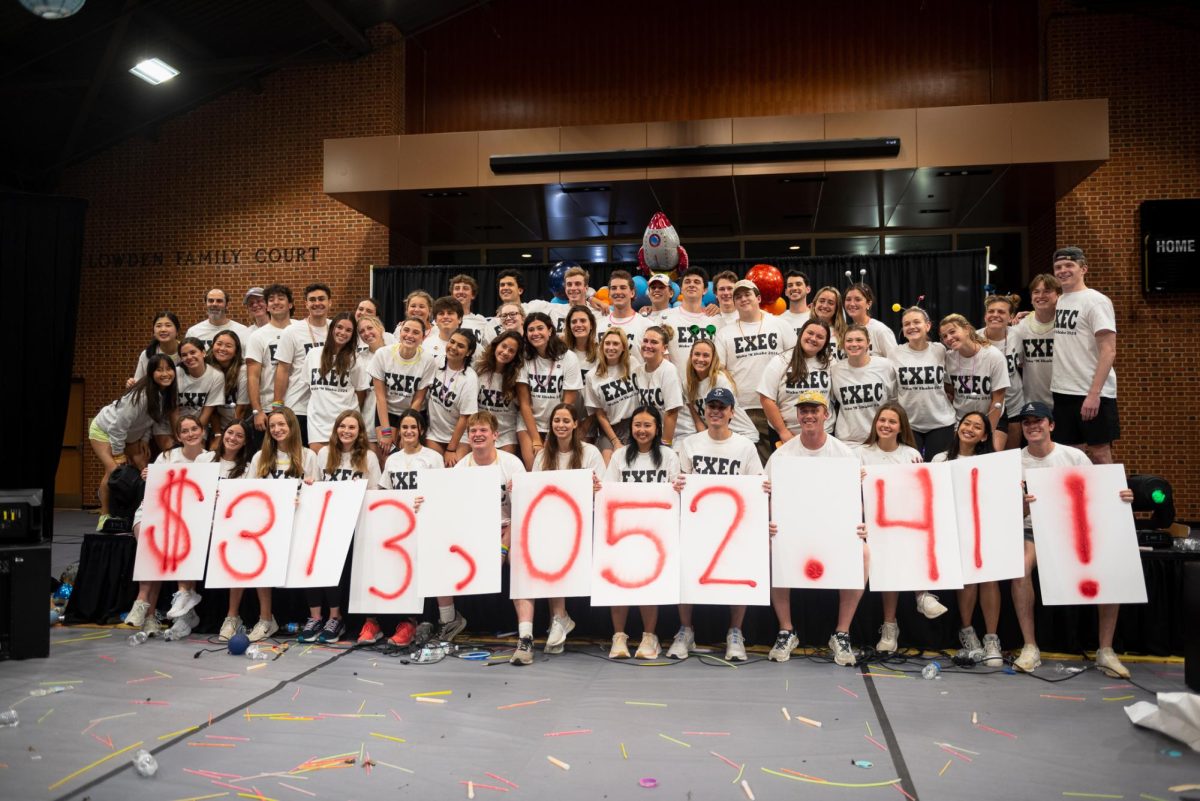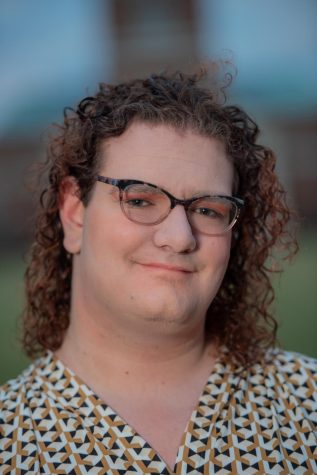Seventeen students gathered in Benson 401 Wednesday evening to share their thoughts on what a campus memorial to “remember and honor the humanity of the enslaved [people] who worked for or were sold to benefit the University” should look like.
The event is the first of two student fora on the subject, with the next forum scheduled for Nov. 2. Two faculty fora have already been held, with a third scheduled for Nov. 14. The Slavery, Race and Memory Project facilitated all of the fora in conjunction with Baskervill, the firm Wake Forest has hired to construct the eventual memorial, for which there are no concrete plans.
“I feel as though dialogue like this is going to be continuously needed as far as raising awareness and not only getting things like monuments and artifacts like this built but also allowing Wake Forest students and the Wake Forest community to have an impact,” freshman Hunter Goins, who attended the event, said.
According to Vice President of Diversity and Inclusion Dr. José Villalba, Baskervill will continue to meet with shareholders on our campus and with communities near Wake Forest’s original campus in Wake Forest, N.C. The Steering Committee for the Slavery, Race and Memory Project will also publish feedback forms on its website in the coming weeks, Villalba said. Following that, per Villalba, Baskervill will “synthesize and analyze” the data they have collected. According to Baskervill Chairman Burt Pinnock, the firm will return, tentatively in the Spring 2024 semester, with a recommendation.
“I do encourage participation [in future events]…,” Pinnock said. “I think most people expect [the event] to be about some design that’s already done…[but] it’s about participating in the process.”
Students share their thoughts
Of the students in attendance, all but one were freshmen who attended for a class. On the left side of the room were freshmen in Dr. Cindy McPeters’ Writing 111 class on the rhetoric of memory, and on the right were students in Dr. Lisa Blee’s First-Year Seminar on “memorial contentions.”
“It’s good that a professor will tell you to come, because I think it starts with that engagement, even if [students are] maybe ‘told to come here,’” Sonny Joy-Hogg, project designer with Baskervill, said. “Hopefully, it sparked conversation within those that came that they now want to go and talk and bring it up more to their students. So even if it was five people, the impact of having people respond and actually listen, that’s all that mattered. And I think we did get that today.”
I feel as though dialogue like this is going to be continuously needed as far as raising awareness and not only getting things like monuments and artifacts like this built but also allowing Wake Forest students and the Wake Forest community to have an impact.
— Hunter Goins ('27)
Many students who spoke with the Old Gold & Black after the event agreed that a memorial was necessary to address the harms caused by the university.
“I think that there is an ugly past that this university is built on,” said freshman Sid Prakash, “and I think remembering that and [having] open discourse about that is really important and could be really enriching, especially from an education standpoint.”
Freshman Micah Owens said that he would like to see a big memorial on campus so that it will stand out from the other, smaller memorials on campus.
“I think one thing I thought of was…a stage to…recreate the selling scene [of an auction where the university sold 16 enslaved people],” Owens said. “So, like, have a stage that would have seats that people could actually sit in, so you could get that real feel [of the auction.]”
Senior Nishka Hajela said that she wished students got to have more time for open discussion. Most feedback was collected via QR codes, though there was time for students to discuss the university’s history regarding slavery and what a memorial might look like.
“I don’t think students are going to use the QR code to put in what they think,” Hajela said.
The university’s history of slavery, and its history of grappling with it
Toward the beginning of the event, Baskervill played an audio the firm produced detailing Wake Forest’s history with enslavement, racism and desegregation. The audio’s narration began in 1821, when Calvin Jones purchased 615 acres, which he named Wake Forest. The audio ends in 2020, when the President’s Commission on Race, Equity and Community recommended renaming roads and buildings that bore the name of Wake Forest’s third president, Washington Manly Wingate, an enslaver who facilitated the aforementioned sale of 16 human beings.
See below for the audio’s full timeline with added context from the Old Gold & Black.
The audio was not meant to be exhaustive, according to Pinnock. For example, the audio leaves out that Wake Forest graduate Thomas Dixon, Jr. wrote the book that inspired “A Birth of a Nation,” a white supremacist film that historians say led to the Ku Klux Klan’s revival.
In the three years since the university’s apology, Wake Forest has taken steps to grapple with its past. On May 7, 2021, the university announced plans to rename what is now the Divinity and Religious Studies Building as “May 7, 1860 Hall,” in reference to the date when the university sold 16 human beings at a slave auction. The building was originally named after Wingate. Students protested the new name, saying it memorialized a dark day in Wake Forest’s history. As a result of backlash, the university put plans to rename the building on pause. Plans to rename the building are still forthcoming.
More recently, Wake Forest successfully renamed two roadways that bore Wingate’s name. Those stretches of road, along with two other then-unnamed roads, now bear the names of campus trailblazers Dr. Dolly McPherson, Dr. Elizabeth Phillips, Dr. Herman Eure and Prof. Marjorie Crisp.
Pinnock recognized that more needs to be done in addition to a memorial.
“There is the will to do [a memorial] but also making sure that this is not the only thing that the university should be doing, or for that matter, is doing…,” Pinnock said. “We talked about just the Office of Diversity and Inclusion and what its initiatives are…and other initiatives. This has to be part and parcel of that.”
Correction Oct. 24: This article was originally published with a subheadline from a separate article. The correct subheadline now appears.















